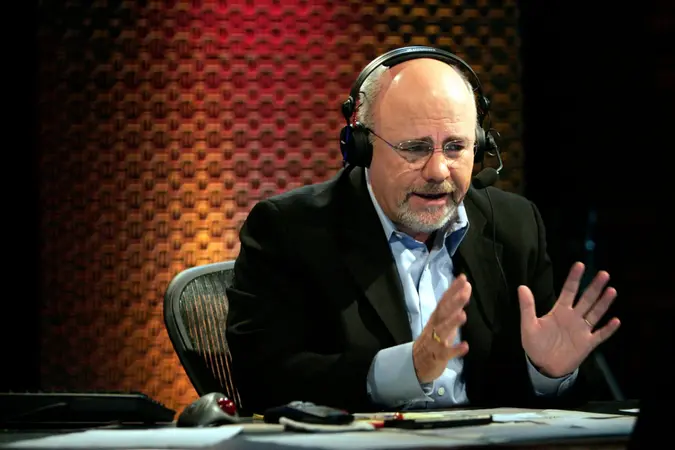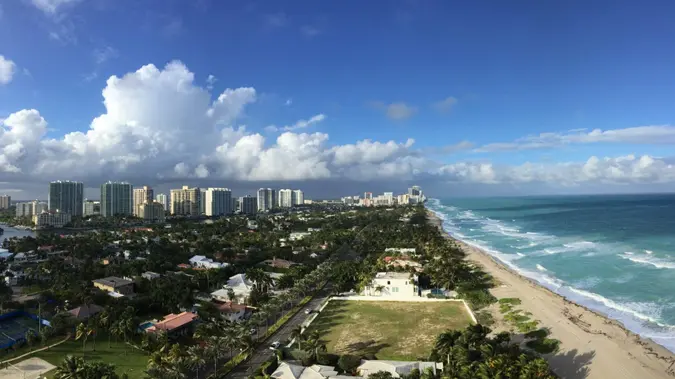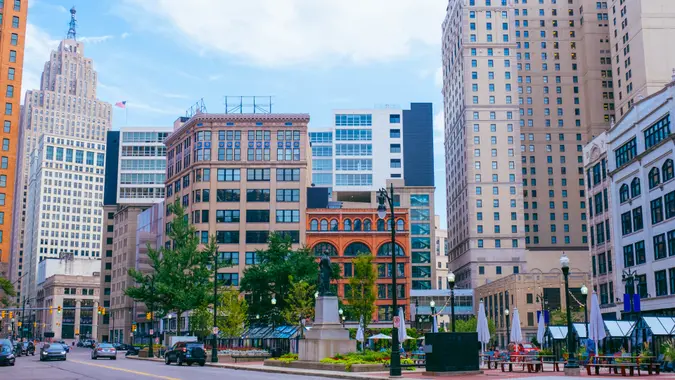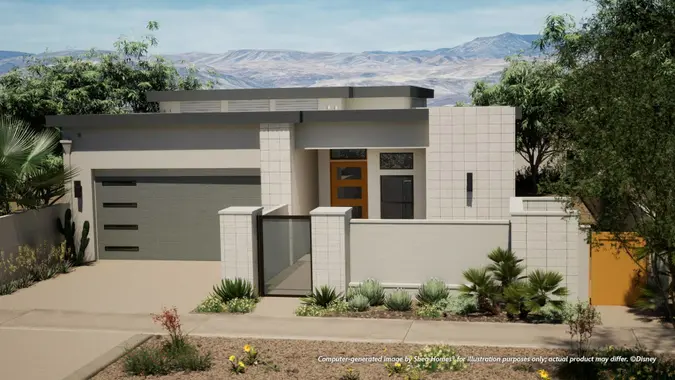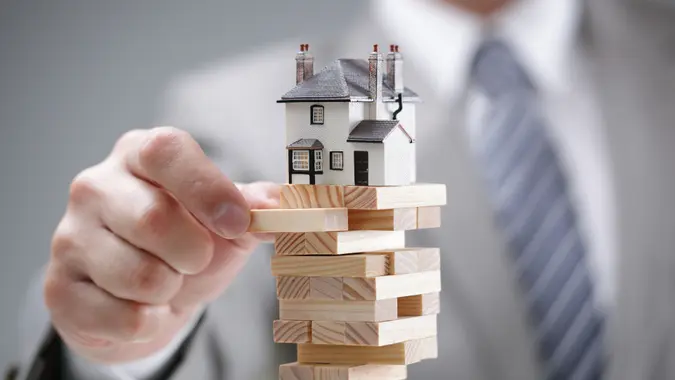5 Reasons House Down Payments Are Still High (Even as the Market Shifts Toward Buyers)

Commitment to Our Readers
GOBankingRates' editorial team is committed to bringing you unbiased reviews and information. We use data-driven methodologies to evaluate financial products and services - our reviews and ratings are not influenced by advertisers. You can read more about our editorial guidelines and our products and services review methodology.

20 Years
Helping You Live Richer

Reviewed
by Experts

Trusted by
Millions of Readers
According to a recent report from Realtor.com, the highest down payments in history were made in 2024, reaching an average of 14.4% as a share of the home’s purchase price and a median down payment of $29,900. This annual figure was up from 14.2% and $27,200 in 2023.
It’s worth pointing out that the median down payment amount in the fourth quarter of 2024 was $30,250. Per Redfin data, the median home sale price went up 6.3% annually in December to reach about $428,000.
Despite hearing that we may be in a buyer’s market, it’s clear that down payments are still on the high side. We will explore why this is the case as we approach the summer months of 2025.
Here are five reasons why down payments are staying on the higher side.
Also find out how to save up for a down payment while on a $50,000 salary.
1. Americans Saved More Money
Research from Realtor.com cited that a relatively high personal savings rate, reaching over 30% during the pandemic, helped with larger down payments because Americans saved more money. Even though personal savings dropped to 4.6% in January 2025, Americans still had a decent nest egg, especially if they were waiting to enter the real estate market.
It would make sense that someone who has been saving up and eagerly waiting to purchase a home has decided to allocate more of their money towards a down payment to ensure that the agreement goes through.
2. High-Net-Worth Individuals Are Investing In Secondary Properties
The study from Realtor.com also pointed out that those who could afford investment or second-home purchases chose to pay a higher down payment, likely to avoid higher interest payments or because of non-primary home purchase requirements. In the final quarter of 2024, investment properties, on average, had down payments of 27.4%, while second-home purchases had down payments of 28%.
3. There’s a Shift in Who’s Buying Properties
Andrew Fortune, a real estate brokerage owner and realtor at Great Colorado Homes, noted that there’s a shift in who’s buying properties.
“Many first-time buyers have been priced out, and what’s left are often repeat buyers or wealthier individuals with equity from a previous sale,” he said. These individuals are likely more financially prepared and willing to drop a higher down payment to secure the right home in the current market.
Taylor Lucyk, a real estate broker and founder of the Taylor Lucyk Group, shared that homeowners who have recently sold their properties have experienced significant appreciation, leading to higher equity and more funds available for their next home purchase.
“This increased equity allows them to use the proceeds towards purchasing their next home.,” he added.
If you were able to make some money on your home in the last few years, you’re in a unique position to invest in a larger property to upgrade your space.
4. Home Prices Haven’t Dropped
“Even with slower sales and longer days on the market, most sellers haven’t been slashing prices,” according to Fortune. “So, buyers still need to bring serious cash to the table to stay competitive, especially in areas where inventory remains tight.”
Those looking to get their home purchase to go through may have to put down a higher down payment to ensure a smooth transaction.
The most recent data from Redfin stated that home prices were up 3.1% on an annual basis in February, with a median selling price of $424,810. Higher housing prices are forcing home buyers to put down more money to get approved for a mortgage. Until prices drop, potential homeowners will have to make larger down payments to increase their odds of getting approved for a mortgage.
Part of the reason housing prices haven’t dropped is that the competition hasn’t vanished yet. Fortune noted that multiple offers are still happening on homes in popular metros with strong job markets, good schools or limited inventory. With multiple offers, sellers know they can be selective with whom they choose to sell to.
The end result is that down payments remain high, even if experts believe that the market will shift toward buyers soon.
5. Higher Mortgage Rates Are Enticing Buyers To Put More Money Down
“High mortgage rates push some buyers to put more money down to lower their monthly payments,” shared Fortune. “A larger down payment can mean a better interest rate or avoiding private mortgage insurance (PMI), both of which make a big difference when rates are hovering near 7%.”
Higher interest rates come with elevated monthly payments, so those with the finances are putting more of their capital in real estate to help ease their monthly budgets since they may not want their housing expenses to account for more than 30% of their monthly income.
The research from Realtor.com noted that when mortgage rates ease up, a more diverse group of buyers may enter the housing market. However, as housing prices and rates remain elevated, down payments will stay on the high side.
More From GOBankingRates
 Written by
Written by  Edited by
Edited by 





